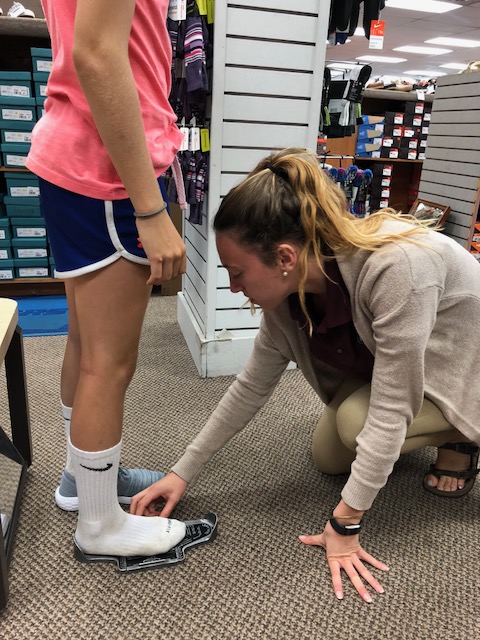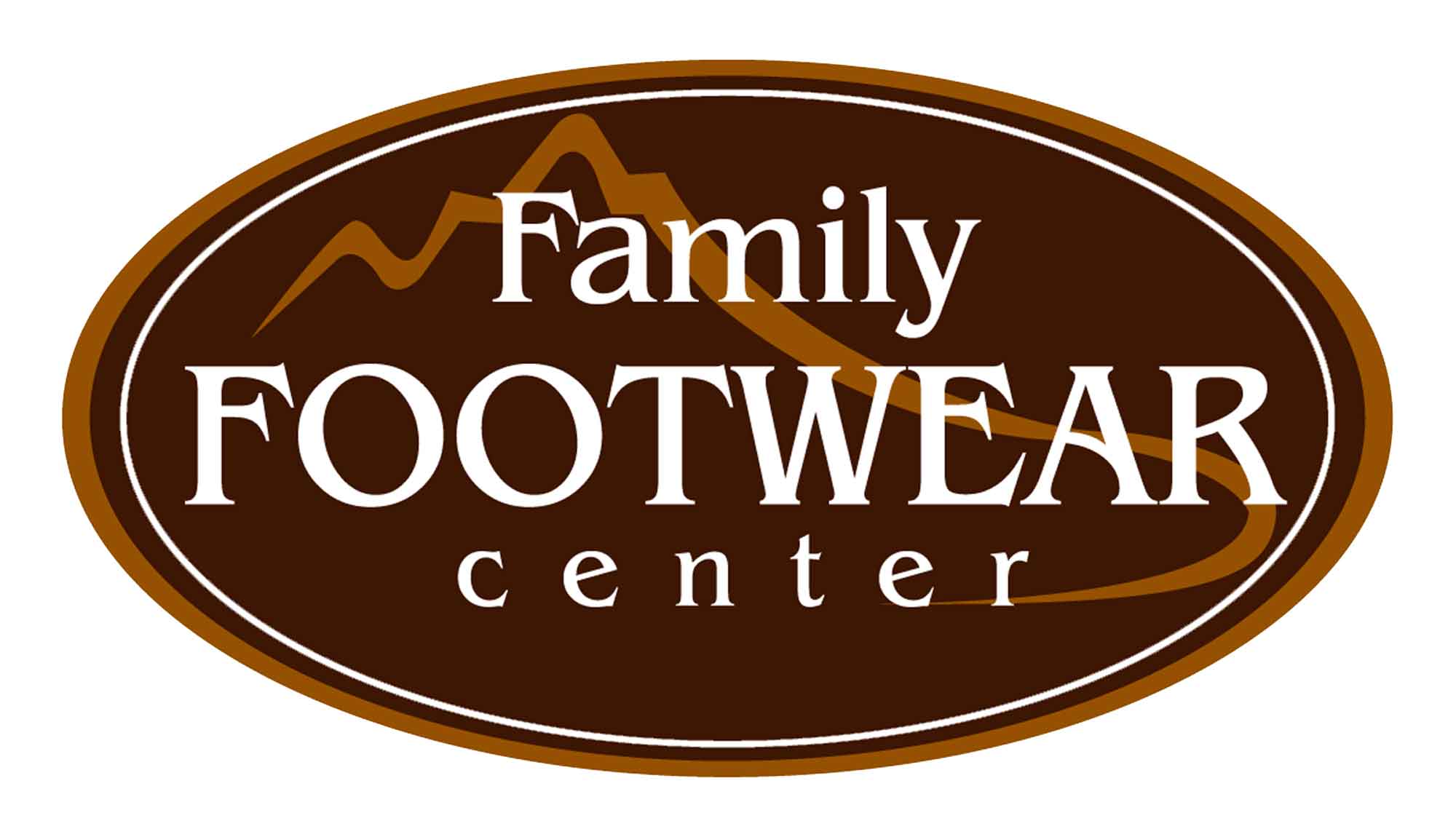Expert Guide to Buying Shoes That Fit
Posted by Cara Spindler on Dec 2nd 2023

Expert Guide to Buying Shoes that Fit
by CARA SPINDLER
Our bodies change over time. Everyone can agree on that.
As we get older, our physiques are not the same as they were back when we graduated high school.
Unfortunately, time and circumstance tend to reshape us physically over the years. Therefore it is not uncommon to find that years after leaving high school we have put on more weight, or simply wound up with a differently shaped body than we had when we were teenagers.
The same thing happens with our feet.
Some people do not like to admit that their foot size may be getting bigger over time.
For example, many women will go through life saying “I wear a size 9 shoe and I have always worn a size 9.” Then years later, when they try on a new pair of shoes in that size and they do not fit, they refuse to acknowledge that their feet have grown bigger and gone up a shoe size, or maybe even spread out in width.
They deny what is happening by stating "these shoes must run small,” or “these shoes are just made too narrow.”
Do our feet keep getting bigger as we age?
Yes, just like our bodies, our feet really do get bigger over time as we age. Through the years, changes in our foot’s size and shape will naturally occur and this is frequently caused by:
- Plantar Fasciitis
- Fallen Arches
- Weight Loss
- Weight Gain
- Injuries
- Arthritis
- Gout
- Bunions
- Hammer Toes
- Pregnancy
In addition, because our feet take such a pounding day in and day out, the ligaments and tendons in our feet may tighten up, or may loosen over time, which also affects their length and their overall shape.
The best thing you can do when buying new shoes is to find a local, old-fashioned shoe store. One that is staffed with knowledgeable sales people will help guide you into the proper-fitting shoes, just like:
As a family-run shoe store, with 5 store locations and over 27 years in the business,
we know quite a bit about fit!
And it all starts with getting an accurate measurement of your feet.
To help you with your next footwear purchase, here are our:
Ultimate Insider Secrets to Buying Shoes
-
Get Both of Your Feet Measured - Yes, Both!
How to Measure Shoe Size
Why do you need both of your feet to be measured?
Most everyone has one foot that is a bit larger than the other. For the proper fit, you will need to go by that larger length, or width, when selecting your footwear. To determine this, find a local shoe store that has employees who are professionally trained in how to properly measure feet, with an old-world Brannock-type device.
What is a Brannock Device?

The Brannock Device was patented back in 1926-1927. It is used to professionally measure the length, width and, very importantly, the arch length of both your feet. The length of your arch runs from your heel up to the ball of your foot and is a crucial factor in determining your proper shoe size. Knowing your arch length helps match up the natural flex point of your foot to where the shoe is designed to bend while walking.
Using a Brannock Device
To use a Brannock Device, you would remove your shoes and begin by placing your right foot on the metal base. With your right heel snugly back against the "right heel cup," you would lean forward and place full, even pressure on that foot. This allows for any splaying of your toes, which will indicate the actual width you will need in the toe box of a shoe. Slide mechanisms are then used to take further measurements of your foot.

Afterward, the device would be turned around and you would repeat the same procedure, this time with your left foot situated snugly back into the "left heel cup." Your foot's true measurement is fully determined by reading the embedded size chart on the base and combining it with other information gathered from the attached sliding mechanisms.
-
Go to a Professional Shoe Store to Measure Kid's Feet
It is a mistake to think you can accurately measure a child's shoe size at home, with a standard ruler, or a tape measure. Especially when it comes to determining a baby or toddler's shoe size. Getting the proper fit is essential for little developing feet. The width must be properly fitted for a toddler's delicate balance, and you also need to account for a child's anticipated growth.

After nearly 100 years, the Brannock Device is still the most reliable way to measure children's and adult's feet.
*Bonus Tips- Before buying shoes online, have your feet professionally measured on a Brannock Device at a local shoe store. Knowing your accurate shoe size minimizes time and effort of exchanging shoes due to improper fit.
- Buy only reputable, quality shoe brands that run true to size online, rather than cheaper, ill-fitting shoes from discounted or overseas manufacturers.
- Before buying shoes online, have your feet professionally measured on a Brannock Device at a local shoe store. Knowing your accurate shoe size minimizes time and effort of exchanging shoes due to improper fit.
-
You Wouldn't Judge a Book by its Cover - Don't Choose a Shoe by its Color
Probably the worst mistake you can make is shopping for a shoe based solely on its looks.
Customers love to choose shoes that come in their favorite bright colors, or that have eye-catching, trendy designs...that they never wind up wearing.
Closets across America are a testament to that. They are filled with cute fashion shoes that just could not perform out on the hiking trail, or that did not provide the traction needed on a wet sailboat deck, or they are ones that just seriously hurt when used at the gym.When you shop for shoes, choose ones that are specifically engineered for the activity you will be using it for. The internal structure, along with the outsole are crucial and will vary by sport, or by the shoe's intended usage.
As an example: Tennis sneakers that provide for ample lateral motion and quick twists and turns on a tennis court would not do very well out on a wooded hiking trail, where a more rigid hiking sneaker with an aggressive outsole would be a much better choice.
Take advantage of the salesperson's knowledge in a shoe store, so they can help you make the right choice.

Ask a professionally trained salesperson to help with sizing and shoe selection.
To illustrate the point: there are so many different styles of athletic shoes nowadays, that it can become confusing knowing which one to choose. There are walking sneakers, street running sneakers, off-street trail runners, treadmill sneakers, cross-trainers and even minimalist sneakers designed specifically for running marathons through mud and water.
A trained sales associate can first help narrow down your choices, based on the activity you will be using them for, and from there you can then select one with the color and looks that appeal to you. This way you cannot go wrong for function and the shoe will not wind up just sitting there looking cute at the bottom of your closet.
-
If a Shoe Feels Uncomfortable in the Store, It Will Feel Worse When You Get it Home
Never ever buy shoes that feel too tight when you first try them on in a shoe store.
The general rule of thumb is that shoes should feel super good as soon as you put them on. If a pair of shoes feels in any way uncomfortable when walking around the shoe store, it means they are not properly fitted to your feet.

Shoes will not magically feel any better after you have purchased them and brought them home.
Well-fitting shoes should have some wiggle room in the toe area and your heels should be well-seated in the heel cup of the shoes. If you feel as if your toes are cramped in the toe box, or the heels fit too snug, don’t assume the shoes will stretch out over time and become more comfortable. This actually is a red flag that the length and/or width is just not right.
Another good indicator of a well-fitting shoe is the arch. Most people don't know this - but you should not even be aware that the arch is underfoot. The shoe should just feel comfortable. Period.
Feeling the arch push up under the balls of your feet means that the arch is too far forward, hence the shoes are too big. And likewise, if the arch is creating pressure under any part of your heel, it signals that the arch is too far back and the shoes are too small.
Shoes should feel 100% comfortable from the moment you put them on, plain and simple!
-
Shop for Shoes Late in the Day...and Bring Extra Socks!
Ever notice how your feet tend to hurt by the end of a long day? That is because after hours of standing, walking, or working all day, our feet tend to swell.
This explains why that new pair of walking shoes may have felt pretty good when you first laced them up on the first day of your vacation, but then felt agonizingly tight and cramped after a full day of walking around the city sight-seeing.
The best way to prevent “buyer’s remorse” when shoe-shopping is to always, always, always shop for new shoes late in the day, rather than earlier. This assures that your shoes will feel good even when your feet are swollen, and at their very worst.
If you are buying shoes or boots to wear outside in the wintertime, be sure to bring along those thicker wool socks you will be wearing with them when winter sets in. There is nothing worse than buying a pair of winter boots you had tried on with a thin cotton sock in September, only to find out in December that those boots fit way too tight when wearing them with those thicker, warmer socks.
*Bonus Tip
- In order for a winter boot to keep you warm there needs to be space, or an air pocket, around the feet. This is where the body heat given off by your foot will collect and help keep your feet warm. The insulation in the lining of a boot is mostly there to prevent your body heat from escaping.
-
In the Shoe World You Really Do Get What You Pay For.
Since your body is the vehicle you use to get through life, think of your feet as the tires.
Yes, think of the bottoms of your feet like the tires of a car. As you get older, the padding on the balls and heels of your feet (or the tread of your feet, if you will) tends to wear out and become thinner. In addition, your arches may drop and flatten out, causing feet to splay and become wider. Since your feet are what drives your body forward day after day, getting a well-made, comfortable pair of shoes will really make a difference.
If you don’t want achy feet, it is not enough to just shop a brand you like. You really have to shop the model as well.
Most People do not like to acknowledge this, but it is true: the more you pay the better the shoes. Simple as that!
Higher Style Numbers = Higher Prices, but also means Higher Levels of Comfort and Support!
In the shoe industry, many popular brands will carry multiple models of a shoe all sold at different price levels. For example, a brand of athletic sneakers will make low-end, mid-level and high-end versions of running shoes.
With each model level you go up, the price tag of the shoes will also go up considerably.
But important to note: so does the level of arch support, the quality of the outsole, the amount of padding in the insole, the level of shock absorption, and the overall structured performance of the shoe.
One Final Thought
If you follow these expert insider tips when you set out to purchase your next pair of shoes, you should literally walk away with a comfortable pair of shoes that fit well and that will feel good from morning till night - that you will want to wear and that will not be left just sitting in your closet.
Don’t be afraid to invest in your feet. Your feet matter.
After all, you are on them all day!
*Updated to provide the most up to date information


